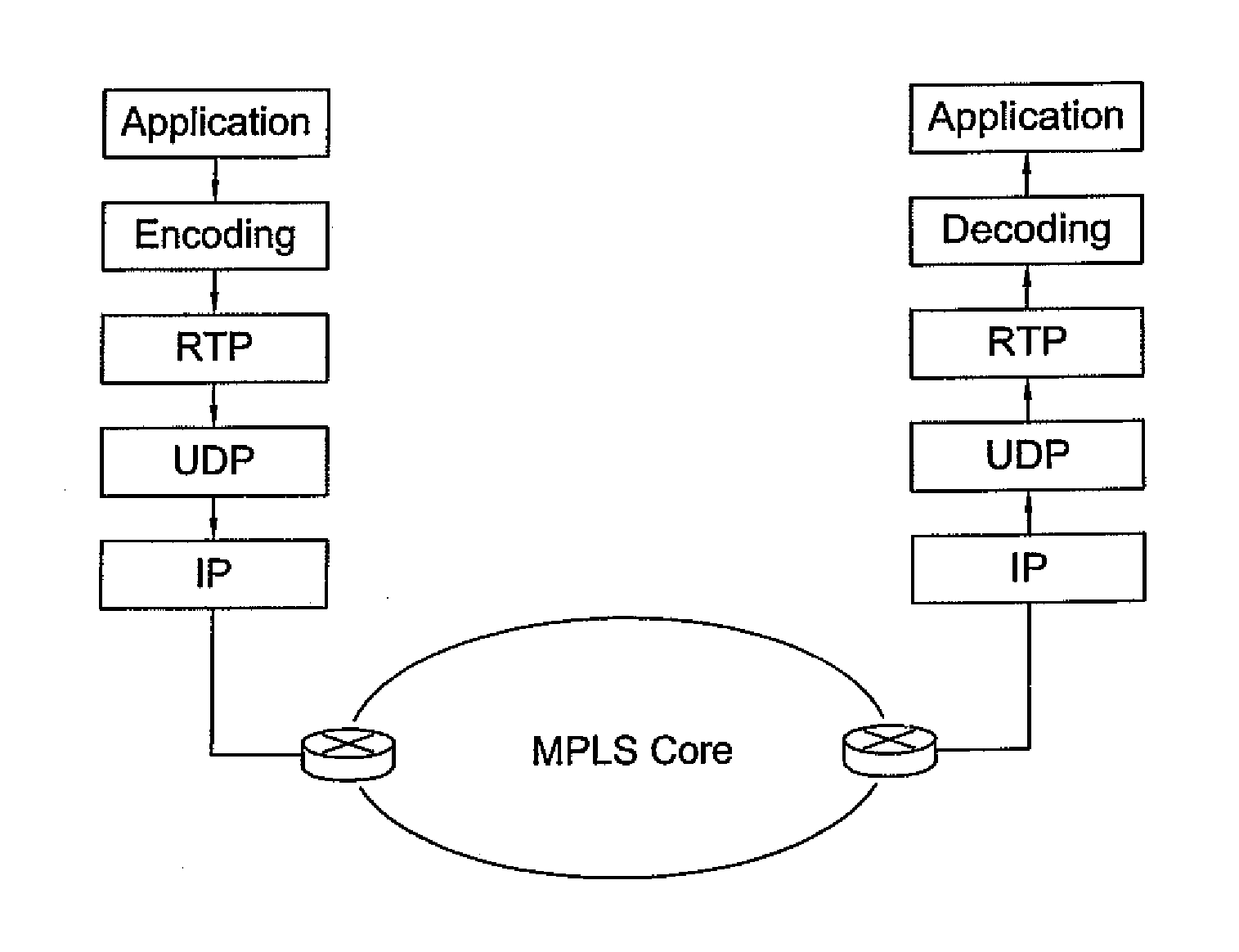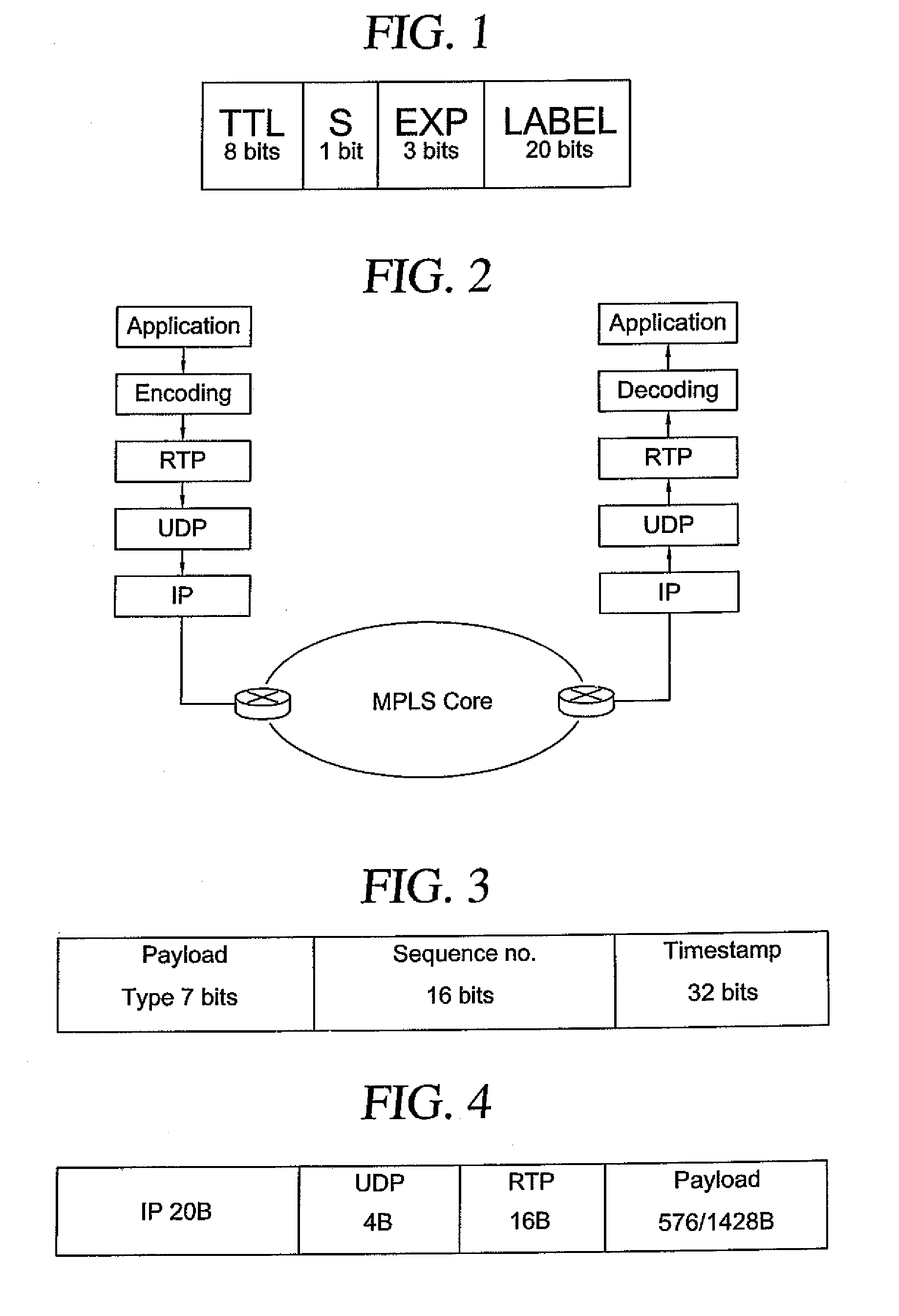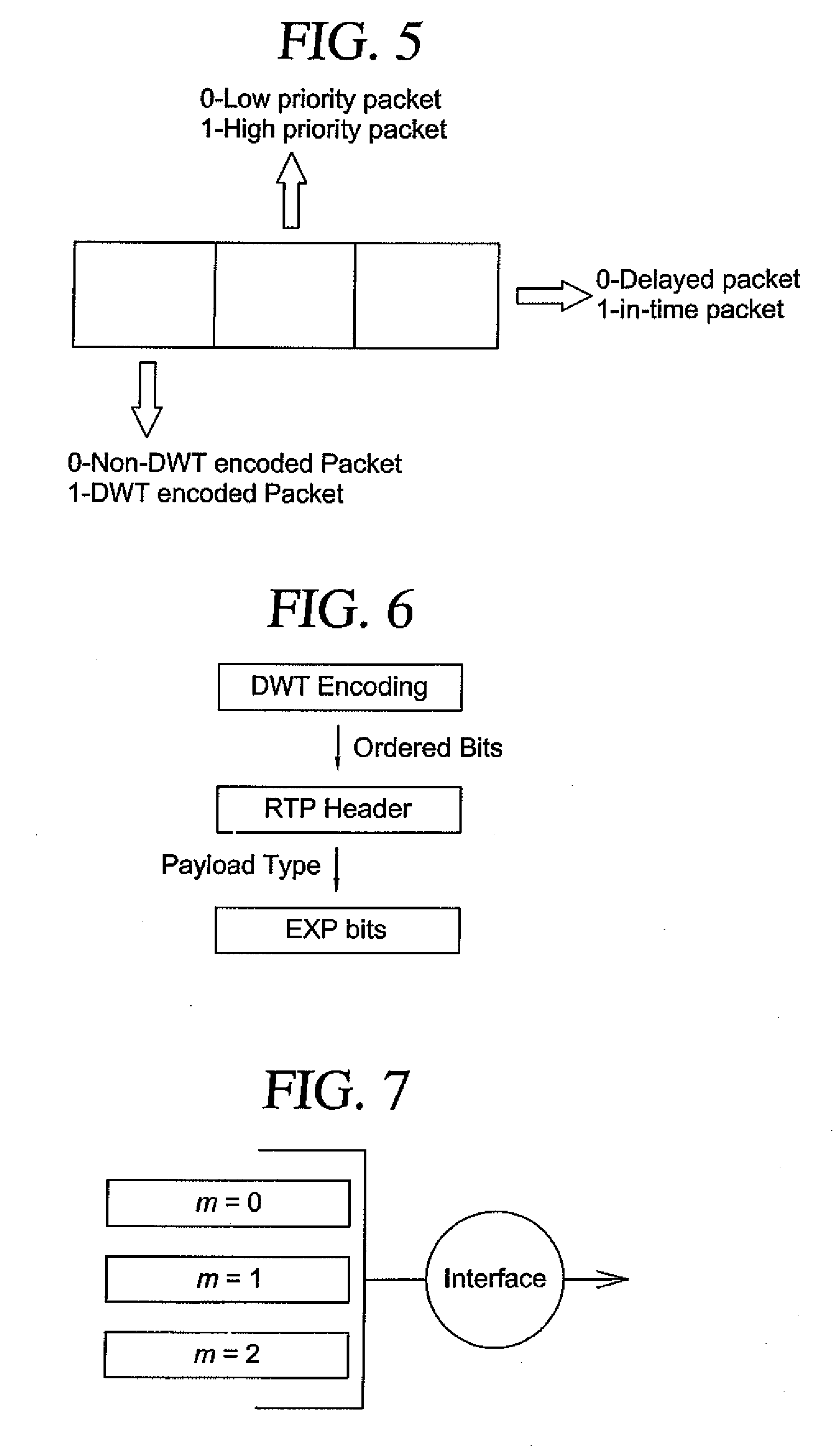Content-aware congestion control system
a congestion control system and content technology, applied in data switching networks, instruments, frequency-division multiplexes, etc., can solve the problems of ezw based quality degradation, inability to tolerate loss of parts of compressed frames, and non-standard techniques that can provide graceful degradation, etc., to achieve the effect of gratifying degradation of ezw based quality
- Summary
- Abstract
- Description
- Claims
- Application Information
AI Technical Summary
Benefits of technology
Problems solved by technology
Method used
Image
Examples
Embodiment Construction
(A) MPLS Routers Operations
[0043]An MPLS router performs three main functions: pushing of a label (encapsulating a regular IP packet with MPLS header), swapping the label (changing incoming label to outgoing label according to preconfigured switching table) and popping label (removing label at the edge of the network). The present invention enhances these three functions of an MPLS router in such a way that it makes the router intelligent enough in making forwarding decisions under network congestion. The scheme is implemented to serve a wide range of loss-tolerant, real-time applications as well as images whose content can be dropped under congestion (graceful degradation).
[0044]One of the problems related to MPLS, is how to map packets onto forwarding equivalence classes. As shown in FIG. 1, the MPLS shim header contains the actual label that is inserted between the layers 2 and 3 headers. The header is 32 bits long. It is worth noting the 3 experimental bits, marked as EXP. These...
PUM
 Login to View More
Login to View More Abstract
Description
Claims
Application Information
 Login to View More
Login to View More - R&D
- Intellectual Property
- Life Sciences
- Materials
- Tech Scout
- Unparalleled Data Quality
- Higher Quality Content
- 60% Fewer Hallucinations
Browse by: Latest US Patents, China's latest patents, Technical Efficacy Thesaurus, Application Domain, Technology Topic, Popular Technical Reports.
© 2025 PatSnap. All rights reserved.Legal|Privacy policy|Modern Slavery Act Transparency Statement|Sitemap|About US| Contact US: help@patsnap.com



